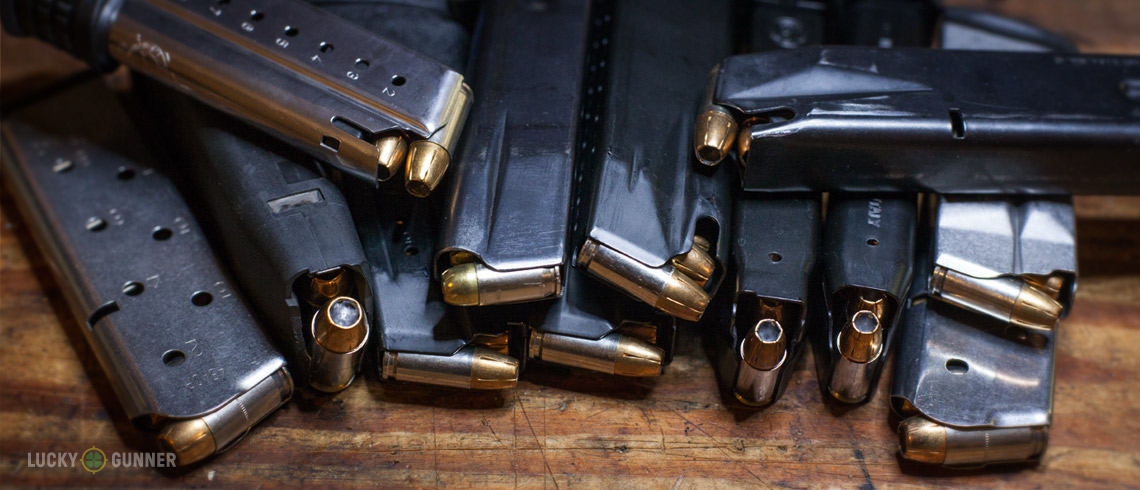- Uk Magazine Loaded
- Does Leaving A Magazine Loaded Damage It Causes
- Does Leaving A Magazine Loaded Damage It Is Good
John interrupts one of my carving sessions, so I thought I'd address a frequently asked question. - Please visit the Hickok45.com website and check out what the great folks who support.
Nope, springs don't work that way.The 'letting the spring relax' thing is total BS. The only thing that matters to a spring is whether it is over extended or compressed. If the spring is within its normal operating range, it doesn't matter if it spends it's entire time at 100% displacement or 0% displacement, the life of the spring won't change.Poor quality mags might be produced in a way where the springs are hyper extended/contracted at either full or empty. GOOD magazines should be entirely within spring-specs through their entire range of motion.
I found this in the firingline forums, link below:-About 10 years ago, an engineer did a study on this subject and wrote it up in one of the magazines.As I recall, he recommended downloading the staggered-column magazines by 10% - 2 rounds in a 15 to 20 round magazine.He personally had two Glock 17 magazines fail to function after leaving them fully loaded for 3 months.He also observed that the single column magazine springs were less affected. I remember hearing about a 1911-A1 magazine that was left loaded in an attic right after WWII, and it fired the 7 loaded rounds perfectly after it was found!If someone still has this article, please speak-up.Thanks,Mk.IV-link.
- What terrible reasons are there to not keep a gun loaded long-term? I’m not aware of any. I’ve always had at least one firearm in a perpetually ready-to-use loaded state within easy reach for a decade. Same gun, same magazines, same ammunition.
- Can you keep glock clips loaded, does it damage magazines to leave them loaded, does it harm clips leaving them loaded, does it hurt to leave a glock magazine loaded, does it hurt to leave a magazine loaded, does leaving magazines loaded ruin them, how long can you leave a glock magazine loaded, how long can you leave glock magazines loaded.
I don't have my engineering textbooks in front of me, but:Wikipedia: )Notice the Popular mechanics section:Contrary to popular belief, springs do not appreciably 'creep' or get 'tired' with age alone.citation needed Spring steel has a very high resistance to creep under normal loads. For instance, in a car engine, valve springs typically undergo about a quarter billion cycles of compression-decompression over the engine's life time and exhibit no noticeable change in length or loss of strength. But for good measure, springs can be replaced when doing a valve job. The sag observed in some older automobiles suspension is usually due to the springs being occasionally compressed beyond their yield point, causing plastic deformation. This can happen when the vehicle hits a large bump or pothole, especially when heavily loaded. Most vehicles will accumulate a number of such impacts over their working life, leading to a lower ride height and eventual bottoming-out of the suspension.

Uk Magazine Loaded
In addition, frequent exposure to road salt accelerates corrosion, leading to premature failure of the springs in the car's suspension. Weakening of a spring is usually an indication that it is close to complete failure.This section isn't as detailed as an engineering textbook, but allude properly to the main failure mechanisms of springs due to use/storage.

Does Leaving A Magazine Loaded Damage It Causes
The only other method of failure is a spring 'breaking' as a result of metal-failure, such as rust.I'm sure one of the mechanical engineers on the forum can confirm this for you if you don't believe me. Click to expand.This is the point I was making.NOW, if you ever find that American Handgunner article mentioned, I'd love to see it, especially the failure analysis that they did. The problem I see with most 'gun rag' 'studies' is that they rarely rely on proper scientific method and do a foolish job with not enough of a sampling or 'studying' of the problem.It is scientific fact (ask ANY knowledgeable mechanical engineer) that springs do not wear out from sitting.Again, I really want to see the FA of the study mentioned. Otherwise (10% failures in loaded mags, blah blah blah) the study is worthless. FA is extremely useful to determine whether there was an in-grown bias with the study, or even if the control wasn't a true control.Off the top of my head: If the magazines that were fully loaded were left on a lower shelf, which was closer to the heater, they could have been subject to higher moisture.
Does Leaving A Magazine Loaded Damage It Is Good
Also, if the magazines that failed were all from the same/similar manufacturing batch, there could have been a manufacturing defect that caused it.It doesn't say which magazines they were (though they do mention they found an issue with double stacks), perhaps the outward force/increased spring tension caused the frame of the feed lips to deform. Alternatively, perhaps the follower was tweaked in a manner which caused the failure.I will repeat: In general, the rules of springs dictate that fully loading a properly manufactured/designed magazine will not wear it any less/more than an empty one, or one with a few missing.